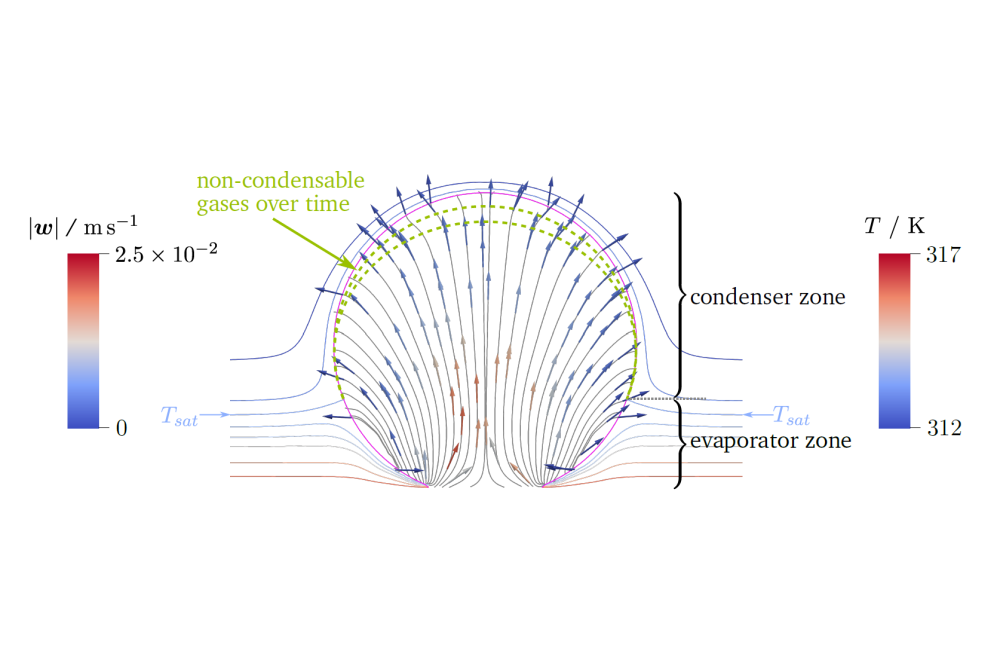Numerical Simulation of Nucleate Boiling in Microgravity
Einleitung
Nucleate boiling is a very efficient heat transfer mechanism. It is used in a wide variety of applications on Earth, such as energy conversion or chemical processes. Due to its high efficiency nucleate boiling is also a promising process for the cooling of electronic components in space applications. The comparison of popular correlations on the prediction of the heat transfer in nucleate boiling respectively the underlying single bubble growth demonstrates that further research is required to achieve a general understanding of the single bubble growth process, especially in microgravity. Nucleate boiling resp. single bubble growth is highly complex, as it involves mass, momentum and heat transfer on different temporal and spatial scales. Therefore, the numerical simulation of this process is quite challenging and requires lots of computational power. The High Performance Computer enables us to perform mesh studies, parametric studies and analyses with high resolution.
Methoden
We use a modified multiphase Volume-of-Fluid solver from the numerical toolbox OpenFOAM. It includes the modeling of a.o. accurate interface reconstruction and advection, phase change and conjugate heat transfer. With the default Volume-of-Fluid method, the conjugate heat transfer and phase change in the vicinity of the three-phase contact line are not modeled in a physical way. Therefore, two new models were developed and validated, which result in significantly enhanced agreement with experimental results.
Ergebnisse
The OpenFOAM solver with the newly developed models was validated against experimental results from the Multiscale Boiling Project (RUBI) on the ISS. There, single bubble growth is studied in detail. Various configurations of subcooling, heater heat flux and preheating time were selected for the comparison of the experimental results with the numerical results. Satisfactory agreement was not achieved initially. As a probable reasons the suspected presence of non-condensable gases in the experiment was identified. These gases flow from the evaporator zone near the bubble foot towards the condenser zone near the bubble top, where they accumulate over time and hinder further condensation. This phenomenon results in a stronger overall bubble growth than without non-condensable gases. A workaround for the inclusion of the effect of non-condensable gases was introduced, resulting in a significantly better agreement.
Diskussion
With the validation of both the numerical solver and of the numerical setup the selected cases were analyzed. Besides the heat transfer paths also the efficiencies in heat transfer between the selected cases were compared. It is found that the cases with moderate to small bubble growth are superior to cases with strong bubble growth in terms of removed heat. This finding can be translated to a recommendation for technical devices which utilize single bubble growth respectively nucleate boiling. Using a multitude of comparatively smaller bubbles is more beneficial than using a few, large bubbles.




